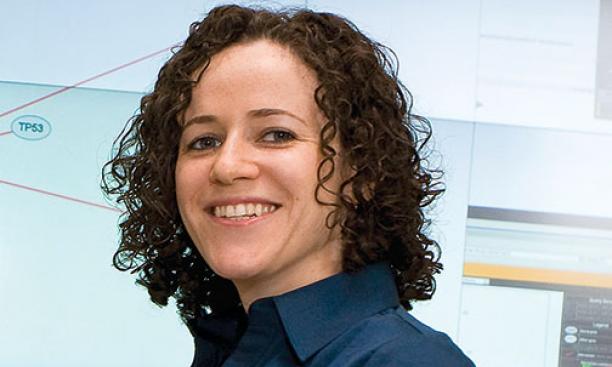

Scientists have long sought a better understanding of how human tissues work in the body, but these processes are extremely hard to study. Recently, researchers have begun sampling tissues, then analyzing their components — genes, proteins, and RNA — using computers, then creating complex maps that provide an overview of how these components interact with each other. The maps provide insights into how tissues work and track what goes awry when patients develop cancer, diabetes, and other disorders.
But not all tissues are accessible, and many can’t be manipulated well in the laboratory. To fill in these knowledge gaps, the lab of computer science professor Olga Troyanskaya recently achieved an extraordinary feat — compiling 38,000 sets of genomic experiments done by others to create a tool that shows how the genes in 144 human tissues work. Putting together and analyzing this amount of information is a huge step forward — no one has been able to create such maps before.
Making sense of large computer-generated datasets is Troyanskaya’s bread and butter. Her laboratory, part of the Lewis-Sigler Institute for Integrative Genomics, uses statistical and computational analyses to manipulate vast amounts of information generated by biologists. Her latest work is an example of an innovative and ever more computationally sophisticated way to make the most of the data. The sheer amount of data from both healthy and diseased samples that Troyanskaya studied allowed the team to deduce the gene maps for several difficult to study but important tissues.
The map of the brain that the lab generated is helping Troyanskaya understand autism. “You can think of the brain network we generated from the big data as a molecular-level map of how the brain works,” she says. While many hundreds of genes likely underlie the neurodevelopmental disorder, only a few dozen are known. Using these established genes but no clinical samples that came directly from those with autism, the lab was able to predict new connections, creating a gene map that “appears to be very helpful in understanding the genetic basis of autism,” Troyanskaya says. “We now have a better idea of the relationship between genomic changes and biological pathways that are likely to underlie autism-spectrum disorders.” The long-term goal is to identify mutations in genes associated with autism to guide clinical diagnoses. But first, scientists will need to validate how these genes are linked to autism.
The extensive tissue maps generated are publicly available for other researchers to use. They will be helpful, Troyanskaya says, for drug development and studies of how diseases affect specific tissue types, which could guide new treatments.
